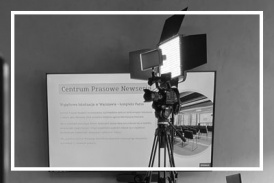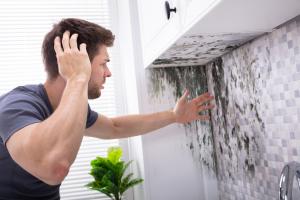Strategies for Preventing Mold Growth Following Hurricanes and Severe Storms
Earl Carr, Jr., president of Gulf 52 in Hammond, Louisiana, emphasizes that the window to prevent mold is limited. “Mold can begin to grow within 24 to 48 hours following water intrusion. Timely response is critical, especially in high-humidity regions like southern Louisiana,” said Carr. “Preventing mold is a matter of eliminating moisture and controlling environmental conditions before microbial growth can take hold.”
Following a hurricane or storm, properties often experience flooding, roof damage, or wind-driven rain infiltration. Even minor water exposure inside wall cavities, flooring systems, or insulation materials can lead to the ideal conditions for mold colonies to develop. Addressing these risks requires a systematic, multi-step approach that begins as soon as access to the property is deemed safe.
The first step in mold prevention is water removal. Standing water must be extracted from all affected areas, including subflooring, basements, and wall voids. Pumps, wet vacuums, and water extraction mats are commonly used to perform this task. Surface drying alone is not sufficient; moisture hidden beneath flooring or behind drywall can continue to fuel mold growth if not fully addressed.
After visible water is removed, the next phase involves drying and dehumidification. Industrial-grade air movers and dehumidifiers are deployed to lower ambient humidity and draw moisture out of porous materials. Moisture meters and infrared cameras are used to detect lingering water within walls, ceilings, and structural cavities. The drying process can take several days, depending on the severity of the exposure and the construction type of the building.
Porous materials that cannot be effectively dried, such as drywall, insulation, carpeting, and certain ceiling tiles, must be removed and discarded. These materials retain moisture and create an environment where mold can thrive even after surface drying has taken place. Removal reduces the risk of cross-contamination and provides better access to the structural components behind them.
Once the property is dry and water-damaged materials are removed, sanitization is required. EPA-registered antimicrobial agents are applied to all exposed surfaces, particularly in areas that experienced flooding or prolonged humidity. These disinfectants help eliminate bacteria, spores, and fungi before they can develop into widespread mold infestations. Careful application, proper dilution, and adequate contact time are critical to ensure effectiveness.
Ventilation also plays a key role. Even after structural drying is complete, enclosed spaces such as closets, attics, and crawlspaces may continue to retain moisture if not ventilated. Strategically placed fans, open windows (when conditions permit), and HVAC system adjustments are used to maintain airflow and encourage evaporation in confined areas.
In some cases, additional protective measures are taken to prevent future mold growth. Sealants and mold-resistant coatings can be applied to framing, subfloors, and exposed sheathing once dry. These products inhibit mold spore adhesion and moisture absorption, creating an added layer of defense in properties prone to repeat exposure.
Property owners must remain vigilant even after initial remediation. Continued monitoring of humidity levels using hygrometers, regular inspections for musty odors or discoloration, and preventive maintenance of roofing, plumbing, and HVAC systems are essential steps in preventing mold recurrence.
Insurance documentation also plays a role in successful mold prevention. Photographic evidence, moisture readings, and detailed cleanup records may be required by adjusters to validate that proper procedures were followed. Failure to take immediate and documented action can result in denied claims or limited coverage for mold remediation.
In storm-prone regions such as Louisiana, the frequency of severe weather events increases the likelihood of recurring water damage. As a result, disaster preparedness must include pre-arranged response plans, professional cleanup contacts, and access to drying equipment. Being ready to act quickly reduces the likelihood that mold will have time to develop.
Carr advises that mold prevention is most effective when treated as a primary objective, not an afterthought. “Delays in drying and sanitation often lead to unnecessary contamination. The priority should be moisture elimination within the first 48 hours. Everything that follows depends on that early intervention.”
Post-storm environments are especially vulnerable due to compromised power, limited ventilation, and high ambient humidity. These conditions create an ideal breeding ground for mold, which is why cleanup protocols must be initiated as soon as it is safe to do so. Waiting for visible mold growth to appear is a mistake; by the time it becomes visible, remediation becomes significantly more complicated and expensive.
Preventing mold after a hurricane or severe storm requires immediate action, consistent monitoring, and adherence to environmental health standards. Through proper drying, removal, disinfection, and ventilation, the risk of mold can be significantly reduced, preserving both the safety of the occupants and the long-term integrity of the structure.
Morgan Thomas
Rhino Digital, LLC
+1 504-875-5036
email us here
Visit us on social media:
Facebook
Legal Disclaimer:
EIN Presswire provides this news content "as is" without warranty of any kind. We do not accept any responsibility or liability for the accuracy, content, images, videos, licenses, completeness, legality, or reliability of the information contained in this article. If you have any complaints or copyright issues related to this article, kindly contact the author above.
The Aku Venue Event Center, LLC Earns 2025 Best of South Carolina Award for Excellence in Event Hosting and Planning
Pre-Orders Opened on July 18 for 'Guts Berserker Armor ‘Rage’' Plastic Model Kit
A Voice of Light: Viviana Puello’s Journey Through Music, Film, and Soul
Kalendarium
Więcej ważnych informacji
 Jedynka Newserii
Jedynka Newserii

 Jedynka Newserii
Jedynka Newserii

Prawo

KE proponuje nowy Fundusz Konkurencyjności. Ma pobudzić inwestycje w strategiczne dla Europy technologie
W środę 16 lipca Komisja Europejska przedstawiła projekt budżetu na lata 2028–2034. Jedna z propozycji zakłada utworzenie Europejskiego Funduszu Konkurencyjności o wartości ponad 400 mld euro, który ma pobudzić inwestycje w technologie strategiczne dla jednolitego rynku. Wśród wspieranych obszarów znalazła się obronność i przestrzeń kosmiczna. Na ten cel ma trafić ponad 130 mld euro, pięciokrotnie więcej niż do tej pory.
Firma
Były prezes PGE: OZE potrzebuje wsparcia magazynów energii. To temat traktowany po macoszemu

Choć udział odnawialnych źródeł energii w miksie energetycznym Polski jest stosunkowo wysoki i rośnie, to ten przyrost jest chaotyczny i nierównomiernie rozłożony miedzy technologiami – wskazuje Forum Energii. Dodatkowo OZE potrzebują wsparcia magazynów energii, a zdaniem Wojciecha Dąbrowskiego, prezesa Fundacji SET, ten temat jest traktowany po macoszemu. Brak magazynów powoduje, że produkcja energii z OZE jest tymczasowo wyłączana, co oznacza marnowanie potencjału tych źródeł.
Infrastruktura
Wzrost wynagrodzeń ekip budowlanych najmocniej wpływa na koszty budowy domu. Zainteresowanie inwestorów mimo to nieznacznie wzrasta

Budowa metra kwadratowego domu w Polsce kosztuje od 5,55 do 6 tys. zł w zależności od województwa – wynika z najnowszych analiz firmy Sekocenbud. Najdrożej jest w Warszawie, gdzie cena za metr kwadratowy domu przekroczyła już 6,2 tys. zł. Na przyrosty kosztów budowy domu wpływają zarówno drożejące materiały budowlane, jak i wyższe wynagrodzenia pracowników. Inwestorzy nie rezygnują jednak z budowy domów jednorodzinnych, co ma związek m.in. z wciąż wysokimi cenami mieszkań czy też obniżką stóp procentowych.
Partner serwisu
Szkolenia

Akademia Newserii
Akademia Newserii to projekt, w ramach którego najlepsi polscy dziennikarze biznesowi, giełdowi oraz lifestylowi, a także szkoleniowcy z wieloletnim doświadczeniem dzielą się swoją wiedzą nt. pracy z mediami.










.gif)

 |
| |
| |
|